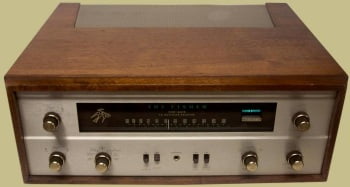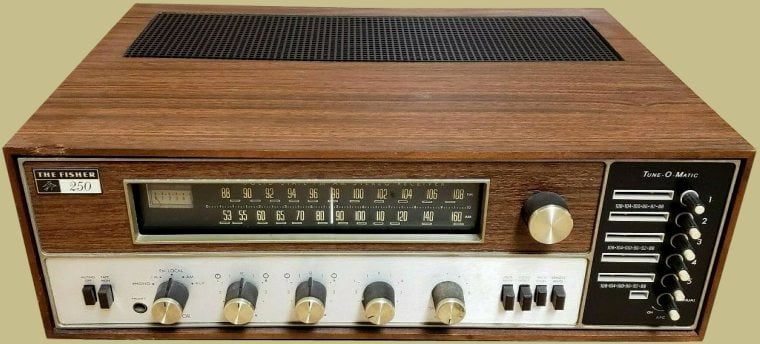
This Fisher 250-T is an early solid state model from Fisher. It was offered from about 1968 until roughly 1973. Power output is a little confusing. It is listed as a 100 watt receiver on the back panel but that is not per channel and is the older IHF wattage measurement which is different than RMS wattage. I believe it is actually about 30 watts per channel into 8 ohms. Still, that wasn’t bad since this was a number of years before the wattage wars of the mid to late 1970’s had even started. The 250-T retailed for $299.99. Buyers had the option of purchasing the 60-UW walnut cabinet for an extra $24.95.
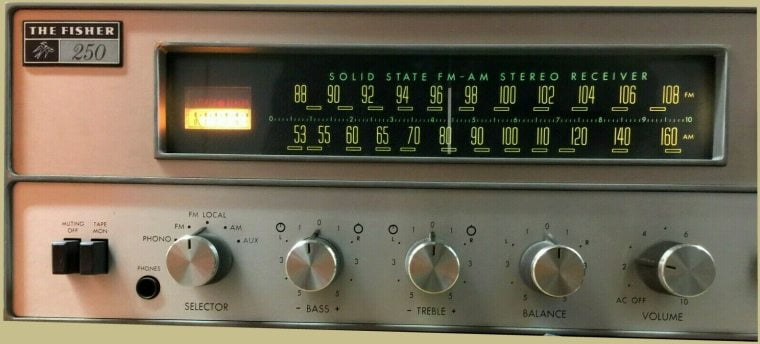
The Fisher 250-T has some appealing design characteristics. The muted two-tone metal panels and large dial glass are pleasing to the eye. The optional cabinet and simulated wood grain vinyl top panel as shown in the top picture give it a more sophisticated look.
The 250-T has what is called Stereo Beacon which automatically switches to stereo mode when a stereo signal is detected. This is shown by the lighted meter at the left of the dial panel. Fisher also used Baxandall tone circuits for the Bass and Treble controls.
Marketing from Fisher at the time focused on the push button memory tuning, or Tune-O-Matic, feature of the 250-T. You can see it on the right side of the front panel. The five push buttons can be used to select predetermined FM stations which, at the time, was quite a feature. Tune in the station with the outer black sleeved knob then push in the white button and you have a preset station. The Manual button at the bottom is to switch back to the manual flywheel tuning knob. The bottom white button would also be pushed in if you want to tune AM as the presets are FM only.

AFC on the bottom button stands for Automatic Frequency Control and, according to Fisher:
“Provides perfect center-of-channel tuning – electronically locks in the desired FM station. This is electric diode tuning – totally different from and infinitely superior to mechanical push button tuning.”
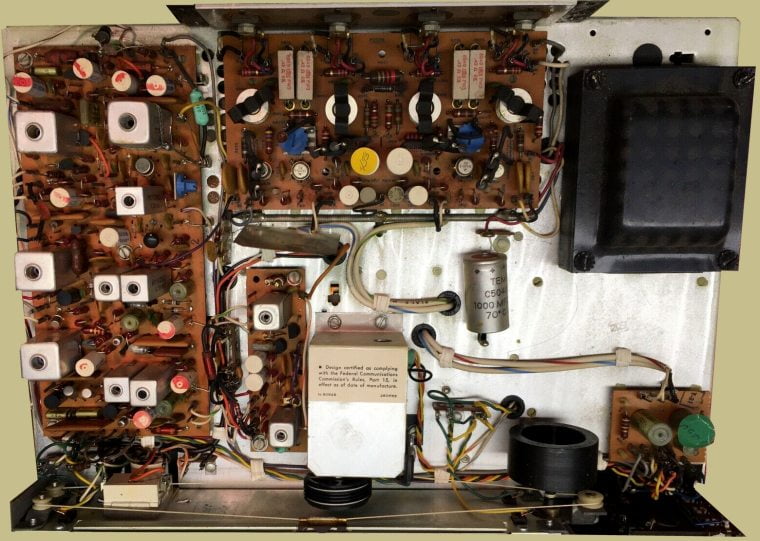
Sometimes the switches and buttons on the front panel can get dirty and become a little touchy. Also, any issues with capacitors or diodes on the regulated power supply board can cause problems with tuning such as drift or the inability to lock a channel.

There are actually three models of the Fisher 250-T. Two of them can be discerned from the serial number on the back panel. A serial number below 73896 is a 250-T, above that is a 250-TX. There are some subtle differences between the two models and they use different service manuals but the only obvious visual difference is just the removal of two fuses on the back panel of the 250-TX. There is also a re-badged version of the 250-T called the 24R that can be found in some consoles.
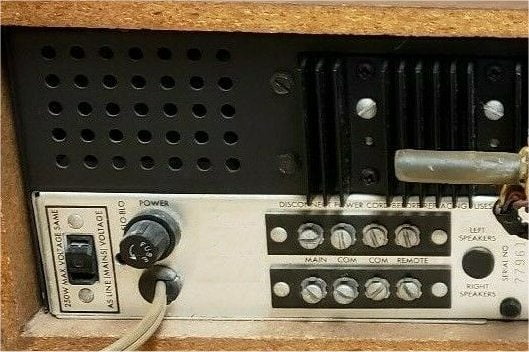
Above is the back of the 250-TX. The two output fuses that are on the 250-T are not on the 250-TX.

While it had decent power for its time, the Fisher 250-T is not high powered. Using the stereo in a smaller room and pairing it up with some efficient speakers is your best bet. These stereos are fairly pricey nowadays. Maybe because of Fisher’s reputation with their earlier tube radios. However, the T in 250-T stands for transistor not tube. But, it is a nice example of early solid state technology from a well known American audio company.

